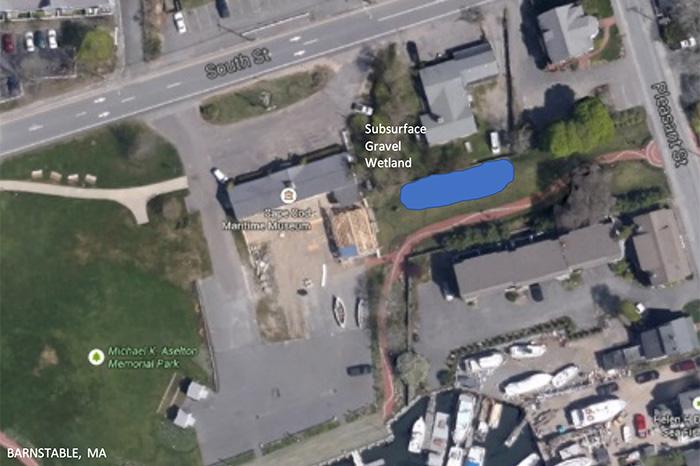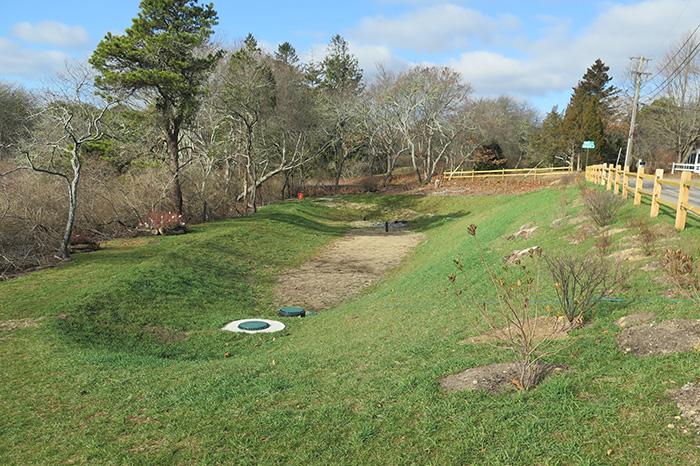u.s. epa Green Infrastructure Stormwater improvements
Back to ProjecTsProject Description
Throughout 2014 and 2015, CEI worked as part of an on-call team with the U.S. Environmental Protection Agency (EPA), the Town of Chatham, and the Town of Barnstable (Hyannis) to complete two Green Infrastructure (GI) Stormwater Best Management Practice (BMP) Retrofit Education and Outreach Projects. Both sites are in urban settings, with considerably impervious watersheds. BMPs were designed and constructed as a hybrid system, incorporating components from both a bioretention cell and a gravel wetland.
The Barnstable BMP is constructed adjacent to the Hyannis Inner Harbor in a highly visible area (within a municipal park) with foot traffic to the Hyannis Ferry passing on a regular basis. This location provides an ideal public contact, outreach and demonstration opportunity. Being located within an urban park presented a unique opportunity to design a BMP which fit the site both physically as well as aesthetically. A new manhole with a diversion wall was installed to intercept the existing drainage trunk line adjacent to the site. From there, stormwater flows into a bioretention gravel cell providing aerobic and anaerobic conditions for nitrogen removal and conversion. Treated stormwater is then released back into the existing drainage line where it discharges into Hyannis Inner Harbor.
The Chatham BMP is located immediately upstream of Oyster Pond in a neighborhood setting on Town-owned property. Construction entailed installation of a new manhole with a diversion wall within Oyster Pond Furlong to divert small storms into a deep-sump manhole for pretreatment, allowing sediment particles to settle out, helping to keep the gravel bioretention cell free of sediment and making maintenance easier. Stormwater then flows into the aerobic portion of the BMP where it is exposed to aerobic bacteria for aerobic oxidation and nitrogen conversion. Stormwater then percolates through a bioretention soil layer where plant matter provides further nutrient uptake through the root systems where it enters a zone of anaerobic conditions. Here, bacteria provide further nitrogen removal via conversion of oxygenated nitrogen to nitrogen gas via denitrification process. Finally, treated stormwater is released in a controlled manner via a new outlet control structure.
Additional design elements include an impermeable membrane and perimeter drain around the basin to prevent mixing of groundwater with stormwater. A maintenance road was also constructed to provide access to the forebay and gravel wetland cells.
The design process for these BMPs faced unique challenges in terms of an accelerated schedule with regular stakeholder review, available space, differing site constraints and design parameter targets. All of these components had unique cost implications which were carefully managed throughout the project.



